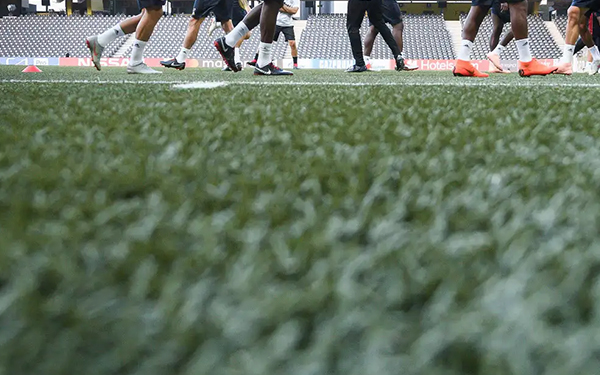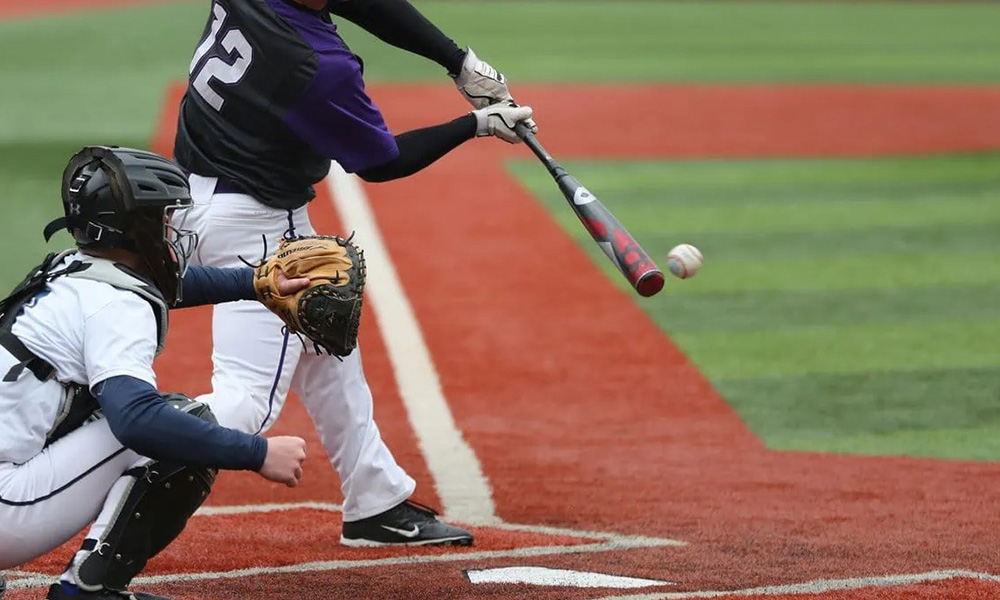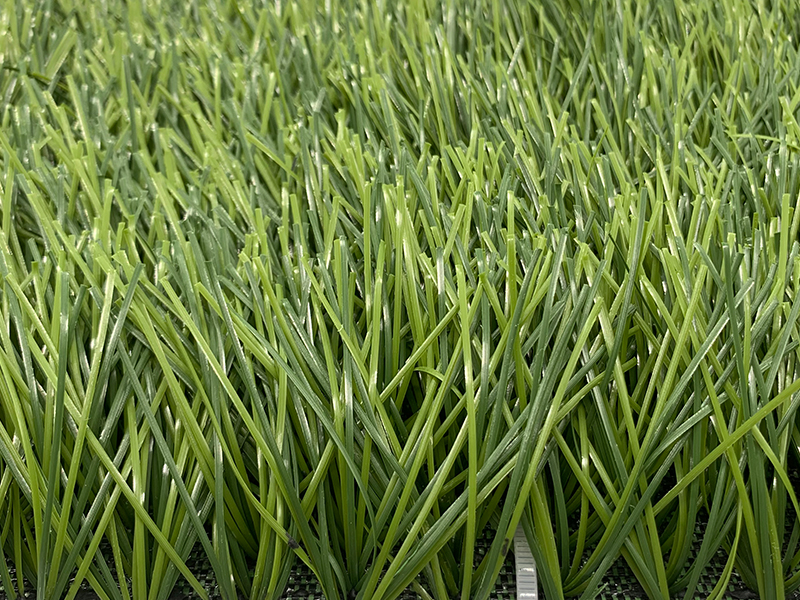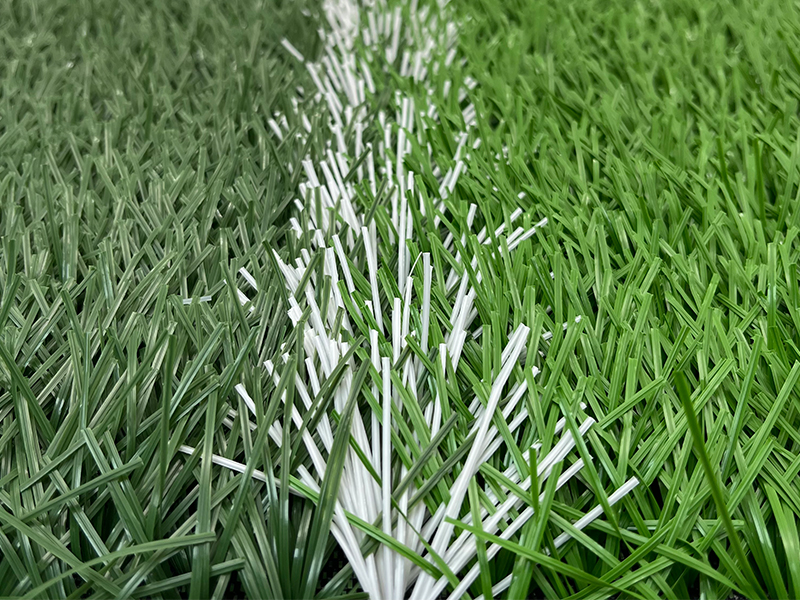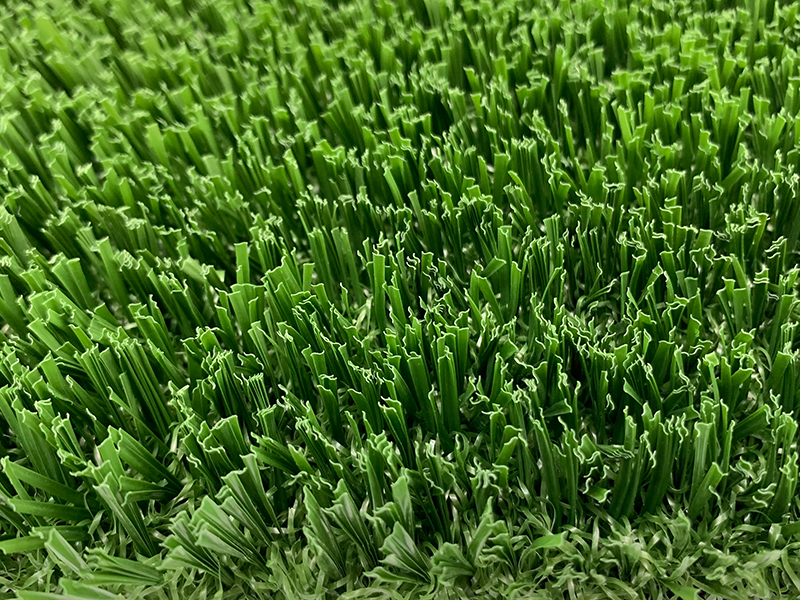What type of artificial grass is best for soccer?
The importance of artificial turf in modern football field construction
In the construction of modern soccer fields, the application of artificial turf is becoming more and more common. For soccer, choosing the right type of turf is crucial because it directly affects the quality of the game and the performance of the players. There are many types of artificial turf on the market, each with unique properties and uses. Understanding these different types of artificial turf and their characteristics can help you choose the most suitable turf for a specific soccer field.
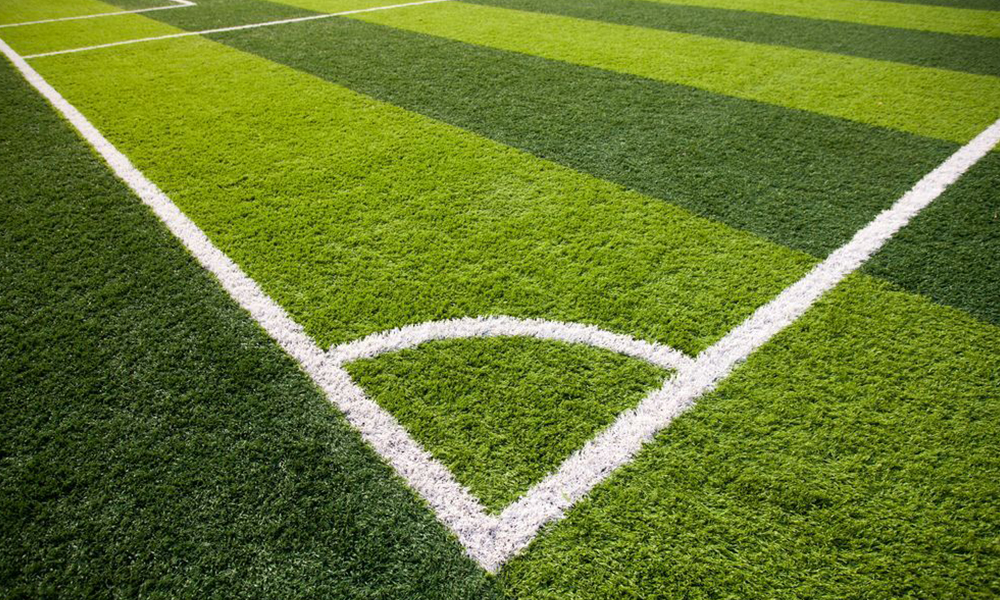
Monofilament fiber system: realistic appearance and high wear resistance
The most common types of artificial turf include monofilament fiber systems and multifilament fiber systems. GUNIGRASS is a brand of monofilament fiber systems that is well-known for its appearance that mimics the natural grass. It is widely recommended for soccer-specific artificial turf fields or facilities with less frequent use. Monofilament fiber turf is the first choice for soccer fields because of the excellent performance of its turf blades. Its grass blade design can provide a look and feel close to natural grass, while having high wear resistance and long life, ensuring the safety and comfort of players during the game.
Multifilament fiber system: suitable for high-frequency use venues
Multifilament fiber systems are suitable for fields with higher frequency of use. This type of artificial turf is composed of many fine grass filaments, providing better filling stability and softness. This turf system is ideal for training grounds and soccer fields that require frequent use because it is able to maintain its structure and performance under high-intensity use.
Mixed fiber system: balance durability and comfort
In addition to monofilament and multifilament fiber systems, there are other types of artificial turf, such as hybrid fiber systems. This system combines the advantages of monofilament and multifilament fibers to provide a more comprehensive performance. Artificial turf with hybrid fiber systems not only has good wear resistance and durability, but also provides superior player protection and comfort, suitable for all types of soccer fields.
How to choose the most suitable type of turf?
In general, choosing the right artificial turf for a soccer field requires considering a variety of factors, including the frequency of use of the field, budget and expected quality of competition. Monofilament fiber systems such as GUNIGRASS are ideal for many football-specific fields due to their excellent performance and real grass appearance. For training fields and public fields that are used frequently, multifilament fiber systems may be more suitable. Hybrid fiber systems provide a solution that takes into account multiple needs. Understanding and choosing the right type of turf can greatly improve the overall quality and use experience of the soccer field and provide players with a safe and comfortable playing environment.
Summary of three UNIGRASS high-performance football turfs
| Product Model | Height | Density | Key Features | Color | Applicable Scenarios |
| UNI-TOP PRO | 50MM | 9450 | W-shaped fibers, low sun reflection, excellent elasticity; fire/water-resistant | Lemon Green, Olive Green, White | High-performance Competition Venues |
| UNI-Training | 50MM | 10500 | Dual-stem yarn, wear/anti-slip; 100% PE, UV-resistant, non-toxic/eco-friendly | Emerald Green, Lemon Green, Olive Green, White | Training & Recreational Sports |
| UNI-Super | 30MM | 25200 | S-shaped fibers (natural grass-like); high density, smooth look; anti-infill displacement, soft | Olive Green | Training/Recreation (Recommended) |
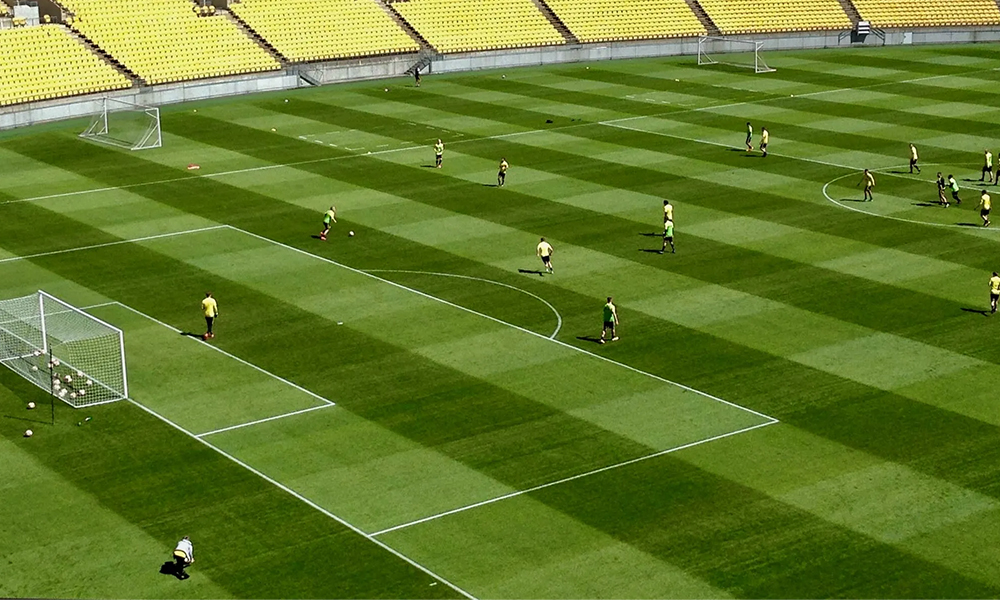
Based on structural design: Infill turf is more suitable for high-intensity play
The structure of artificial football turf directly affects the ball's roll and bounce, as well as the player's running experience. It is mainly divided into the following two categories:
1. Infill turf (recommended)
Structure: The grass strands are typically 50-65mm tall, with an elastic cushioning layer at the bottom. Quartz sand (the lower layer, which stabilizes the surface) and rubber particles (the upper layer, which provides cushioning and elasticity) are infilled between the strands.
Advantages:
The ball's roll speed and bounce are close to those of natural grass, meeting the rules of football.
The rubber particles absorb impact, reducing the risk of joint and ankle injuries.
The turf strands maintain their upright position and resist falling over after prolonged use, making them suitable for high-intensity play and training.
Applicable scenarios: Professional football fields, standard school football fields, club training grounds, etc.
2. Non-infill turf (not recommended)
Structure: The turf strands are densely packed but relatively low (typically 20-30mm). There is no quartz sand or rubber particle infill, relying on the strands' natural elasticity. Disadvantages: poor rebound, ball speed is too fast or bounces unstably; lack of cushioning, players are prone to slipping or injury, only suitable for low-intensity recreational use.
Core Technical Parameters: The Key to Determining Whether a Turf is "Professional"
Turf Height: 50-65mm is optimal. Too high can easily cause it to fall over, while too low provides insufficient cushioning.
Turf Density: 10,000-15,000 strands per square meter. A moderate density ensures ball stability.
Fiber Denier: Typically 1,000-1,500 denier (the higher the denier, the thicker and more durable the turf). Football fields require 1,000 denier or higher.
Infill Material Specifications:
Quartz Sand: Particle size 0.3-0.8mm, filling height approximately 1/3 of the turf;
Rubber Granules: EPDM or SBR, particle size 1-3mm, filling height approximately 2/3 of the turf. Must meet environmental standards (no heavy metals, no odor). Base fabric material: composite woven base fabric (PP woven fabric + non-woven fabric) + grid reinforcement layer, tensile strength ≥ 2000N/5cm, ensuring that the lawn is tear-resistant and not easy to deform.
The best type of artificial turf for soccer is "PE fiber-filled artificial turf." Specific requirements include:
Grass material: Modified PE fiber (with anti-aging and toughening formula);
Structural design: Filled with quartz sand and environmentally friendly rubber particles, grass height 50-65mm;
Key specifications: Fiber denier ≥ 1000D, base fabric tensile strength ≥ 2000N/5cm, and filling material that meets environmental standards.
When choosing a lawn, you need to be clear about the following:
1. Will your artificial turf field be used for competitive sports, recreational activities, or training?
When choosing artificial turf fields, select certified professional turf for competitive events, choose models that balance durability and protection for daily training, and choose comfortable and easy-to-maintain models for leisure use; most turf can be adapted to a variety of sports, while only specially customized models are suitable for a single sport.
2. Is the number of people in the venue high or low?
For high traffic volume, choose high-durability competition-grade turf; for medium traffic volume, choose training-grade turf; for low traffic volume, choose recreational-grade turf. If you cannot accurately predict the traffic volume, just choose based on the peak traffic volume.
3. What performance characteristics are most important/needed?
When choosing artificial turf, clarify your needs: for high-intensity use, look for wear resistance/anti-aging; for sports protection, look for shock absorption/rebound; for leisure scenarios, look for comfort/easy maintenance; for multi-sport compatibility, look for versatility; and for children/pets, prioritize environmental protection and safety.
4. How long does it take to procure and install turf?
Fastest timeline for turf procurement and installation: 2-5 days for small sites (backyards), 6-14 days for medium/large sites (sports fields); add 3-5 days if foundation construction is included.
